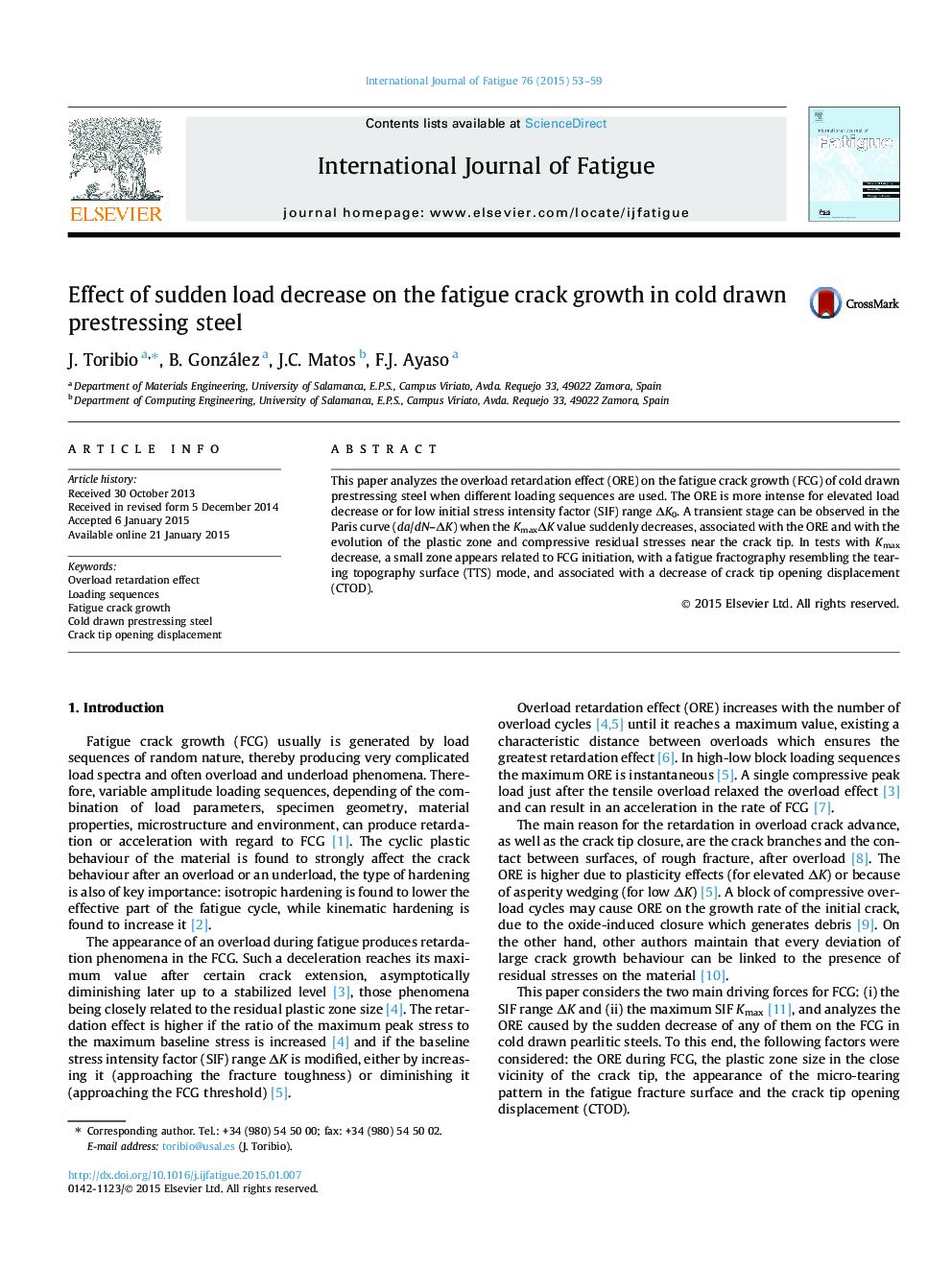| Article ID | Journal | Published Year | Pages | File Type |
|---|---|---|---|---|
| 776629 | International Journal of Fatigue | 2015 | 7 Pages |
•Sudden decrease in either Kmax or ΔK causes a transient state.•Sudden decrease in KmaxΔK causes the overload retardation effect (ORE).•The ORE is more intense when the sudden load decrease is higher.•The ORE is more intense when the initial SIF K0 during the second stage diminishes.•Fatigue fracture surface micro-roughness changes with Kmax.
This paper analyzes the overload retardation effect (ORE) on the fatigue crack growth (FCG) of cold drawn prestressing steel when different loading sequences are used. The ORE is more intense for elevated load decrease or for low initial stress intensity factor (SIF) range ΔK0. A transient stage can be observed in the Paris curve (da/dN–ΔK) when the KmaxΔK value suddenly decreases, associated with the ORE and with the evolution of the plastic zone and compressive residual stresses near the crack tip. In tests with Kmax decrease, a small zone appears related to FCG initiation, with a fatigue fractography resembling the tearing topography surface (TTS) mode, and associated with a decrease of crack tip opening displacement (CTOD).
